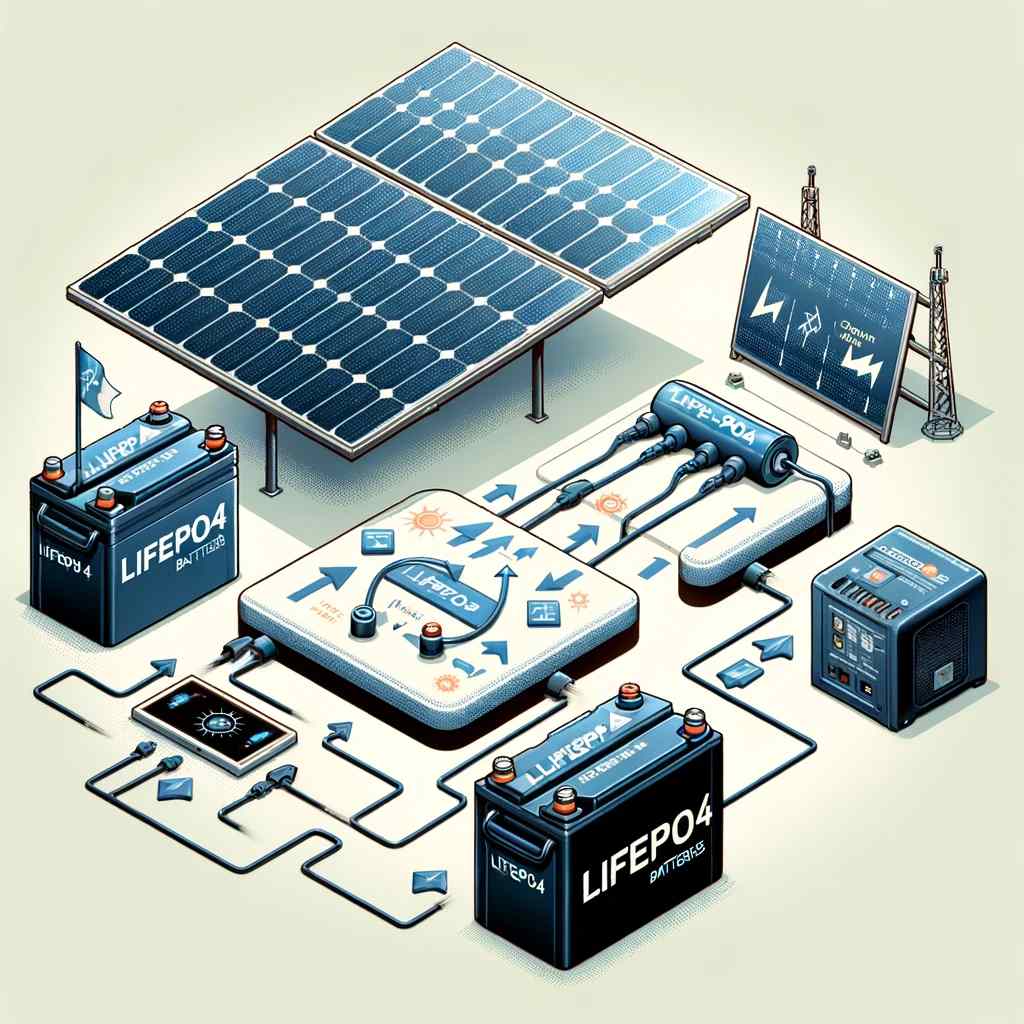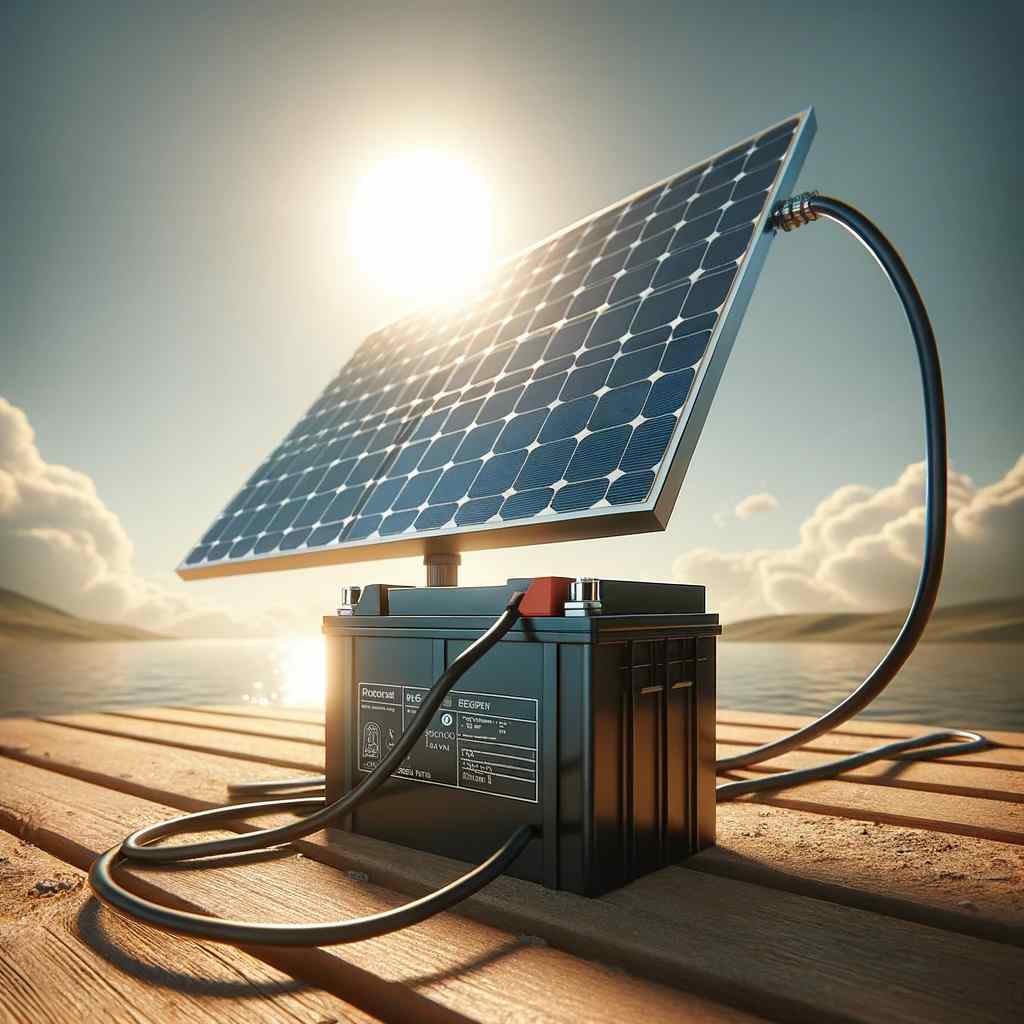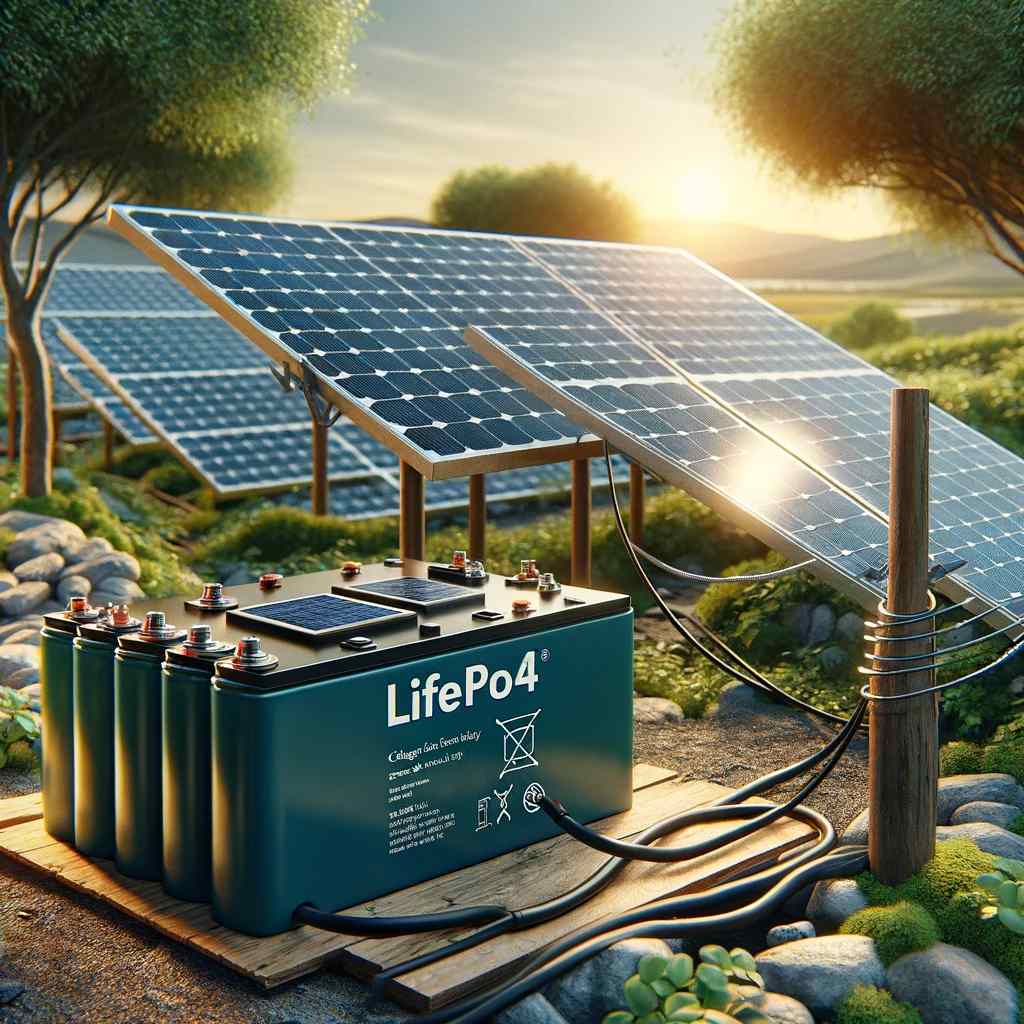It’s likely that you’ve heard a lot lately about LiFePO4 batteries and solar power. We won’t be diving into an advanced chemistry or astrophysics lecture, so don’t worry. Instead, let’s have a friendly chat about these two exciting companions that are making renewable energy even more attractive.
Understanding Solar Power
Imagine harnessing the titanic energy of our lovely sun – clean, abundant, and above all, free! That’s solar power for you. Solar power is like the Superman of renewable energies – using sunlight to generate electricity, and it doesn’t even need the red cape!
From powering homes to charging electric cars, solar energy is popping up everywhere – let me say it’s having its moment under the sun.
Basics of LiFePO4 Batteries
Okay! Next on our list is LiFePO4 batteries (try saying this ten times fast). It sounds like an element from the periodic table, right? But what it does is simply amazing! This little powerhouse can store all that incredible sunlight-generated energy for you to use when you need it most.
The best part? They’re durable, uber-efficient, and super long-lasting (just like your favorite pair of jeans), standing out as one of the best sustainable energy solutions today.
Why Utilize Solar Power to Charge LiFePO4 Batteries?
What could be more delicious than chocolate and peanut butter? Lithium-polymer batteries and solar power! When these two get together, they form a perfect team. It’s like all-natural, glute-free, zero-calorie desert that actually tastes amazing and you can enjoy without the guilt.
Plus, solar power is free (well, once you’ve set everything up) and environmentally friendly. Who wouldn’t love that combination?
Components Required for Charging
You must be wondering – so how does it all come together? Like every superhero duo, our team has some vital sidekicks. The shining stars of this ensemble are solar panels and charge controllers.
The vital function of solar panels, yes, those glistening, futuristic-looking slabs, is to absorb sunlight and convert it to power. In contrast, the charge controller regulates the flow of power like a watchful bouncer, making sure your valuable LiFePO4 batteries are safe while charging.
When to Use a MPPT or PWM Controller?
So we have our superheroes and their sidekicks set. Now how about some gadgets? Every team needs cool techy stuff! In comes the catchy acronyms: MPPT and PWM. Believe me – these aren’t just random letters strung together. They represent two types of controllers that play different roles in your solar charging system.
The primary function of both PWM (Pulse Width Modulation) and MPPT (Maximum Power Point Tracking) is to securely transfer solar power to your battery bank. However, each has special abilities that suit different kinds of settings.
Choosing the Right LiFePO4 Battery
Last but certainly not least important – picking out the right LiFePO4 battery. Ideally, you want to find a battery that’s just right – not too big that it’s overkill or too small that it becomes the bottleneck. Think Goldilocks, but for batteries.
Also, much like choosing a new phone or laptop, you have to consider quality and brand reputation. All these factors make a huge difference for you in the long run.
Guide on Setting Up the System
Now get your hands dirty; it’s time to get everything set up. Imagine engaging in the ultimate Lego or jigsaw puzzle game, only with solar panels, batteries, and controllers in place of tiny blocks or pieces. Not only is it fun to get hands-on with your power system, but you also get bonus green points for setting up a renewable energy source right at your home!
The whole thing might seem like rocket science trust me, with proper safety measures and guidance (maybe a YouTube tutorial or two?), it’s all achievable! Don’t worry; no PhD in electrical engineering needed.
Charging Process – A Detailed Walkthrough
Here comes the exciting part – witnessing that sweet moment when everything clicks into place. The solar panels are lapping up all that dazzling sunlight, converting it into electricity. And with ease fit for a ballet dancer, this electricity is controlled by your chosen MPPT or PWM controller and sent to charge the LiFePO4 battery.
Consider it akin to the refreshments table at a party – Solar panels are like busy bartenders mixing perfect cocktails of electricity and serving them to guests (LiFePO4 batteries) through the watchful eyes of the bouncer (the controller).
Understanding the State-of-Charge (SoC)
You might be wondering how we know if our battery friends have had their fill. Enter again more catchy sounding tech terms: State-of-Charge or SoC for short. Simply put, this is just a fancy way of saying ‘how much juice I’ve got left?’
An accurate SoC can be a lifesaver (or battery saver in this case). This lets you plan your energy usage better, keeping you away from annoying power interruptions while binge-watching your favorite shows.
Safety Precautions During Charging
Though solar power is friendly, safe, and clean, mishaps can still happen. Imagine trying a new but tricky recipe without reading the instructions – doesn’t sound like the best idea, right?
Therefore, basic safety rules should be your bread and butter during solar charging. Remember, you’re dealing with electricity – something that demands respect and caution even when controlled by the eco-friendliest means!
Maintenance Tips for Your System
Now that it’s all set up, part of the job is making sure everything stays just as perfect as it is on Day 1. This isn’t like buying a stylish piece of furniture which once set looks good forever without ever lifting a finger. Think more in terms of taking care of a pet: rewarding but also requiring regular attention.
This involves basic stuff like regular cleaning and inspection. Solar panels love hanging out in the sun (for obvious reasons), so they do attract lots of dust and dirt which might need cleaning from time to time.
Effects of Temperature on Solar Charging
Did you know one superhero’s kryptonite in our renewable energy team is temperature? Yes, solar energy systems can sometimes act like Goldilocks – too hot or too cold is never good.
Be it scorching summers or bone-chilling winters; extreme temperatures can affect how your system performs. So how does one optimise their system for various temperatures? It’s all about strategizing properly.
Troubleshooting Common Problems
Like all great systems, even your solar charging setup might have a few cloudy days. Your system may encounter some challenges, but don’t fret or call the SOS line immediately. With some basic knowledge and a few tips up your sleeve, you can start identifying common issues and determine which ones you can handle yourself before calling in the professionals.
It’s like having a mini first-aid kit at home for those little daily life emergencies. You won’t need an ambulance every time you deal with a tiny paper cut, right?
Future Directions for LiFePO4 Batteries and Solar Energy
As surprising as it may seem, when it comes to the potential benefits of renewable energy, we’re still very much at the beginning. Both solar power and LiFePO4 batteries are wearing their running shoes ready to sprint into the future!
We are seeing more and more businesses and governments realizing the potential and leaning further towards renewable solutions. Add to this continuous technological advancements, and there’s no telling what exciting enhancements we’ll see in our eco-friendly adventure!
How Can Solar Power be Used to Charge LiFePO4 Batteries in Battery Storage Financing?
Solar power can be harnessed to charge LiFePO4 batteries in battery storage financing. A detailed analysis of battery storage financing shows that using solar energy reduces operating costs and reliance on grid power. This sustainable solution benefits both the environment and financial bottom line.
FAQs on Charging LiFePO4 Batteries with Solar Power
You’re not alone if you’ve had some recurring questions as you try getting your head around this revolutionary technology of powering batteries through sunlight. There’s a whole community out there seeking answers to these common curiosities. Not to mention that quiet place in our minds where we dare not ask an ‘obvious’ question.
So let’s battle that uncertainty together as we answer some frequently asked questions about charging LiFePO4 batteries with solar power, and you might finally have your “Eureka!” moment.
Further Reading Recommendations
If you’ve made it this far, chances are you’re pretty hooked (or at least mildly invested) in all things solar energy and battery technology. To help feed your fascination, here’s a handy list of books and reliable online resources to dig deeper into the realm of renewable energy. Trust me, it’s an enlightening read for those long commutes to work or cozy weekend afternoons.
Conclusion
And there you have it! A complete guide to charging LiFePO4 batteries with solar power. From understanding the basics and setting up the system, to troubleshooting problems – we’ve covered quite a journey together!
Every revolution begins small, and by setting up your own solar charging system, you are contributing to an essential shift towards sustainable living. It’s eco-friendly, resource-saving and could also be your new fun DIY home project. Who knew going green could be so exciting!
This is just the first step to a brighter future where power cuts are history, and charging doesn’t skim our wallets or hurt Mother Earth. And remember – the future is as bright as we make it!


